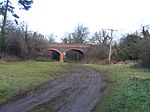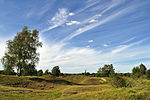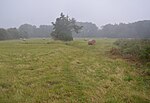Barnack railway station
BarnackBuildings and structures in PeterboroughDisused railway stations in CambridgeshireEast of England railway station stubsFormer Great Northern Railway stations ... and 5 more
Pages with no open date in Infobox stationRailway stations in Great Britain closed in 1929Railway stations in Great Britain opened in 1867Transport in PeterboroughUse British English from April 2017

Barnack railway station was a station in the Soke of Peterborough (now Cambridgeshire) serving the village of Barnack. Despite being located adjacent to the village, the more remote Uffington & Barnack station on the Midland Railway Leicester to Peterborough line was more convenient for many journeys. Barnack station was opened by the Stamford and Essendine Railway (S&ER) on 9 August 1867; it was on the S&ER's branch from Stamford to Wansford. The S&ER was leased to the Great Northern Railway at the end of 1892. The line never really recovered from the 1926 general strike, and the station closed with the line on 1 July 1929. In 2014 the building survives as a private house.
Excerpt from the Wikipedia article Barnack railway station (License: CC BY-SA 3.0, Authors, Images).Barnack railway station
Station Road,
Geographical coordinates (GPS) Address Nearby Places Show on map
Geographical coordinates (GPS)
| Latitude | Longitude |
|---|---|
| N 52.6347 ° | E -0.4011 ° |
Address
Station Road
PE9 3DS
England, United Kingdom
Open on Google Maps










